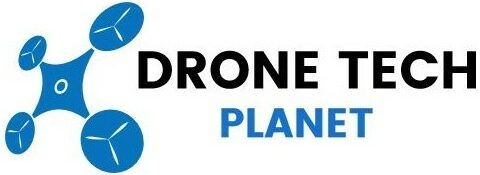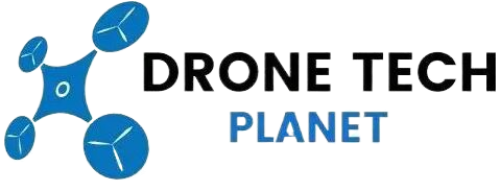Can Drones Auto Rotate?
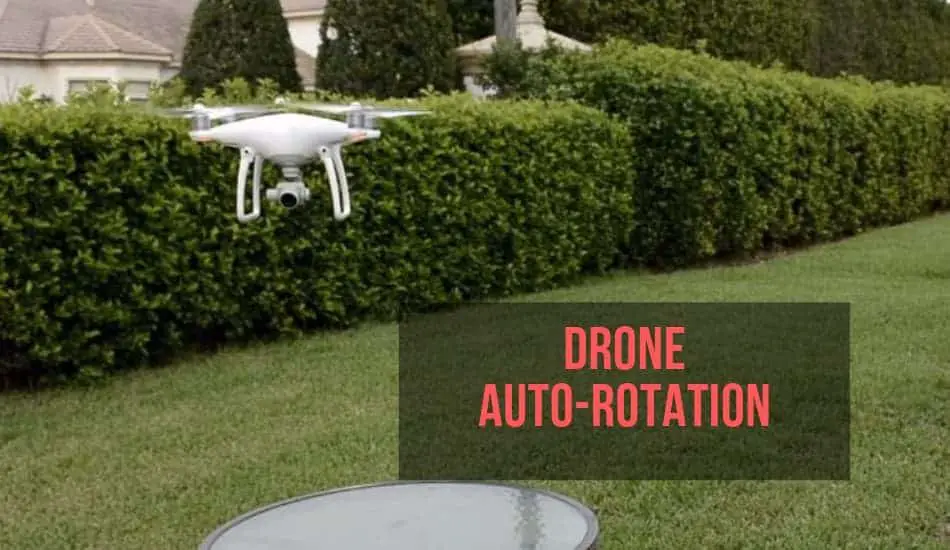
Have you ever ask yourself what could happen to your drone if the battery runs out of energy while you are flying? So if that happens, can your drone (quadcopter) auto rotate, and why is it so important to know before buying a drone? For someone who thinks to invest in any type of drone this is the question that people want to know the answer. Drones that are capable of auto rotating are also less likely to become damaged in a crash unlike those who do not have this feat. So let’s explain this.
Can Drones Auto Rotate? The drones that are on the market don’t have the autorotation state because of their fixed-pitch rotors. Also, auto rotation is not a possibility for commercial drones. To have auto rotation, the rotors must be variable pitch in order for auto-rotation to become possible.
Drones that can’t auto rotate will most likely damage in a crash, unlike the ones that are capable of auto rotate (and very few have this option). So if something happens in the air while you are flying a drone, there is a much greater chance that you will succeed to land that drone safely to the ground. Every drone that have fixed pitch design of the rotors will not be capable of auto rotating. If drone loses power in the air, while it is in flight, it will crash into the ground.
What is Autorotation?

Autorotation is a condition where the rotor blades are being driven by an upwards flow of air, rather than by engine power. The blades rotate automatically. Why is that important? It gives a helicopter pilot the ability to have a controlled glide to the ground if an engine does fail. Autorotation state is when we’ve lowered the collective and the direction of flight is changing to down, and now the rotor is having an upwards flow, rather then a downwards flow of air. And this is called entering an auto rotate of state at this point. From here we’re coming closer and closer to the ground. The most common use of autorotation in helicopters or for drones is to safely land the aircraft in the event of an engine failure or tail-rotor failure.
How Drone Propellers Actually Work?
One of the very common terms when we talk about drones is propeller thrust. So what does the propeller thrust mean in terms of speed and how physics affects it? Simply, drone thrust is the sum of the upward force that your drone gives when at full speed. With that you can determine how much the drone can lift by the thrust a drone generates. Drone thrust must be greater than the weight of the drone, for that drone to take off and actually fly. When a drone propeller is in a moving situation, the thrust changes. When the drone throttle is at 100% the prop will be at maximum thrust. To know how much thrust your drone will give for a given propeller, you have to test the motor thrust or read the instructions that manufacturers provide for your drone. But in reality, what to expect is to see 5 to 10% less thrust in real flight as compared to the bench tests. The more thrust drone provides, the better acceleration is, what provides greater impulse for the drone. Physics Behind How Drones Fly for those who want to know more.
Can a Passenger Drone Perform auto-rotation?
When we talk about passanger drones, the best known among them is Ehang 184. This is the world’s first electric passenger drone and started with commercial services in July 2017. EHang 184 uses 8 electric motors to power 8 propellers which can carry one person weighing up to 100kg. But what if there is a failure, can such a passenger drone auto-rotate and make a safe landing? Like we said Ehang 184 is an X-8 multi-rotor drone, which means it has 4 points of thrust, and each of them is consisting with 2 motor-propellers, one “tractor” propeller and one “pusher.”
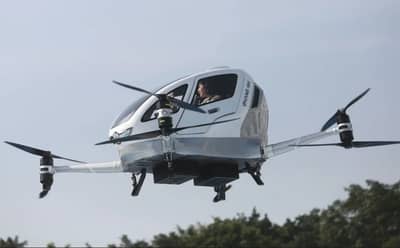
This means if any of the motors dies, the drone won’t flip and crash to the ground, although it would need to land rather quickly. The problem with Ehang 184 is that he has fixed-pitch rotors which is optimized for thrust and not for auto-rotation. And when it comes to absence of power, those rotors won’t autorotate. In the end they will stop rotating “in the normal mode” and start to rotate in the “opposite mode.” That opposite mode will cause drag and some deceleration of the fall, but it will not do the same thing as an autorotation, which is a different condition. There are still no regulations, but Taxi drone are not allowed yet in the US and in most countries around the World. The reason for that is that FAA regulations prevent it from being legally tested in the US for now. Only in Dubai they are testing the Civil Aviation Authority Drones with Ehang, and they are in testing mode.
How to Design a Drone To Have Auto Rotation?
Drones have one major problem, and that is if their motors fail, they could plummet out of the sky and hit us on the head. So how to solve this problems? One of the option is to equip drones with parachutes, but that is very complex thing for a small UAV. But some of the scientists tried to come up with another solution, and that is a US patent called “Meteodrone”, where at least 2 of the drone’s four symmetrically-arranged propeller arms are flat and twisted. Therefore when drone’s motor fail, and the drone starts falling, those arms will act as passive lift elements, and it will cause the drone to spin horizontally. It would help drone to stay stabilized. Example is shown on the picture above.
How Do Drones Fly?
Rotor Direction. The drone is a quadcopter which has 4 rotors that are all connected to individual motors, allowing them to move at different speeds. The two diagonal rotors will rotate clockwise, while the other two diagonal motors will rotate anti-clockwise. The two opposite rotations balance out and keep the drone steady. So if all the rotors were to spin in the same direction, it would result in a net Torque causing the complete quadcopter to rotate. When the rotors spin together, they push down on the air and the air pushes back up on the rotors. When the rotors spin fast the drone lifts up into the sky, and when the rotors slow down the drone will descend towards the ground.
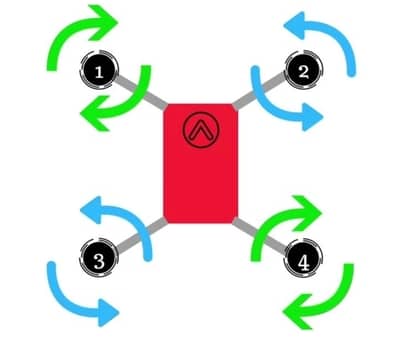
Drone Rotation. When you want the drone to turn, you slow down two of the diagonal motors and you speed up the other two diagonal motors. Remember how the motors next to each other are spinning in opposite directions, so by slowing down two going in one direction and speeding up two going in the other direction. The faster the propellers rotate, the faster the drone will take off from the ground. The lift will remain constant so the drone doesn’t change height, but the angular momentum in increased so the drone will turn in place.
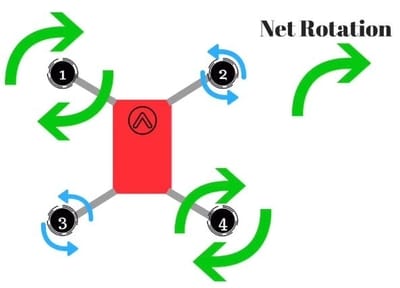
Forward / Backward. If you want the drone to move forwards or backwards, you slow down two rotors on one side of the drone and speed up the two rotors on the other side. The drone tips slightly toward the slower side and move in that direction. This is according to Newton’s 3th law of motion that every action has an equal but opposite reaction. If you want to move sideways or backwards, we just use the same principle on the other sides of the drone.
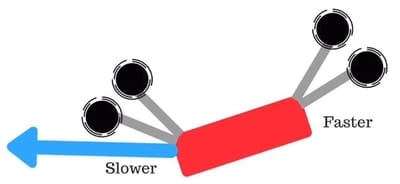
Conclusion
The conclusion of all this is that the design of drone is different than that of a helicopter, and one of the key things that is different is fix-pitch rotor. So if something happens in the air while you are flying a drone, there is a much greater chance that you will succeed to land that drone safely to the ground. Because of that drones can’t auto rotate in the air with their fixed-pitch rotors, and this is a major problem because they are not able to land safely if something goes wrong. The reason why drones can’t have autorotation is that rotors must be variable pitch in order to auto rotate, and most drones are don’t have this design feature. If you decide to create your own drone that have the ability to auto-rotate, then you have to be prepared to spend a extra money for that. Cheaper versions of drones certainly don’t have that options. And remember, if you have any questions about this topic, just leave a comment below.
